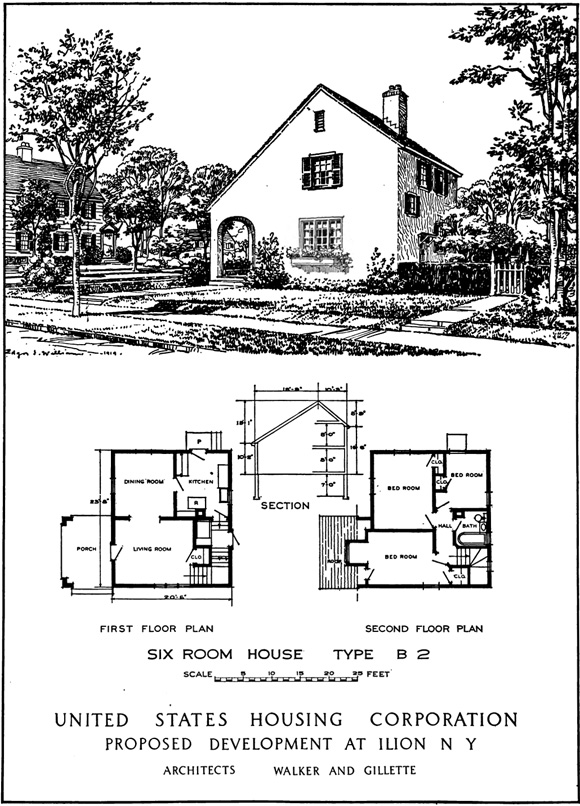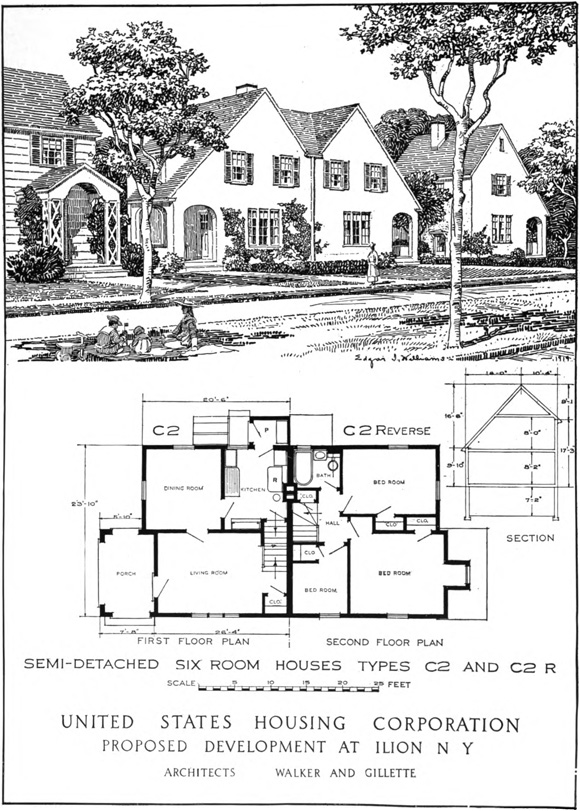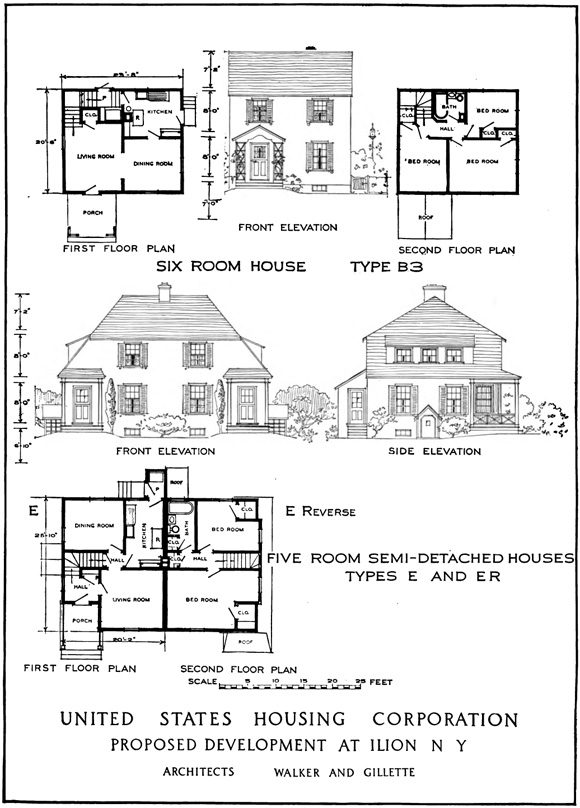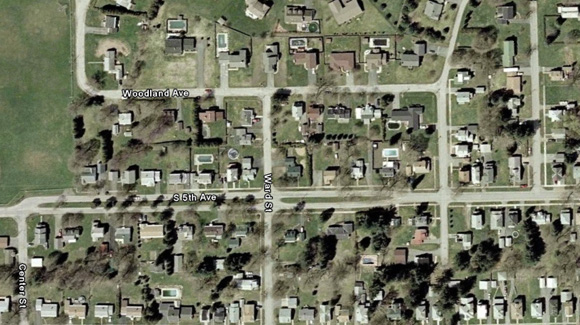Ilion, NY
General Description (1919 report):
"Ilion is about 12 miles east of Utica, NY, on the West Shore Railroad, while the adjoining town of Herkimer is on the New York Central, with sidings not much over a mile from Ilion. The Erie Canal passes through the town. The prewar population was 10,000. The war contracts of the Remington Arms Co. and the Union Metallic Cartridge Co. had increased the population to over 13,000, making housing conditions intolerable.
"The town while discinctly industrial has a population almost entirely American. There are among the workers great numbers of young women from the farming districts of New York State. To obtain all the labor possible from the near-by towns, the Housing Corporation arranged for a special workmen's train on the West Shore Railroad of the New York Central Lines between Ilion and Canajoharie, this seeming to make accessible the largest amount of existing housing within a reasonable distance on one line...
"...Two sites were at first proposed, one for dormitories for girls, on low land three-fourths of a mile south of the works, and another, originally for dwelling houses, on high land to the west of the works and only about 400 feet farther away. The first site on further examination by the designers to be impracticable...All operation swere therefore confined to the second side and an extension thereto, the two together making about 17 acres."
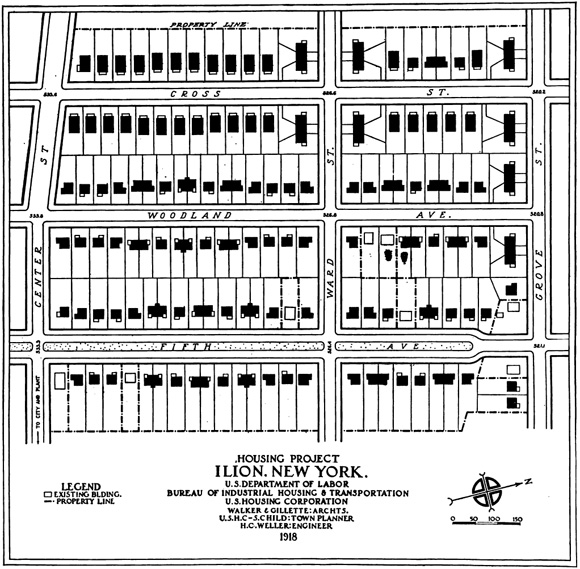
1919 excerpt describing the design of the Ilion Site:
Area Planned: 17.11 acres. Housing planned: Detached houses, 90 families; semidetached houses, 40 families; total, 130 families; 168 single workers in convertible dormitories.
"More than half the area had already been subdivided, with streets dedicated, partly graded, and utilities partly installed.
"Circulation not already secured is completed by the proposed plans. Adaptation of the streets to the topography was not under the circumstances the governing factor in the layout, but rather the extension of the lines of streets already proposed into the increased area made necessary by the abandonment of the site first proposed for dormitories...There were eight houses on the tract which were not distirbed. Their location affected the grouping and design of the new buildings."
"While the war demand was to house many single workers as well as families, it was decided to build only the types of house that would normally be absorbed by the population after the period of congestion. The problem, therefore, was not to construct a community as in some of the larger projects, but to fill out the existing town with desirable houses.
"As the sites were laid out in a manner not calling for large groups of houses, a diversity of design of the houses was made to give architectural interest and meet differing future demands...While this variety has been carried to the limit of adviseability, study of the relation of the houses one to another was made so as to insure a harmonious architectural effect. Particular study was made of the projecting porches. Stucco surfaces or wide clapboards were used for the exterior walls, wood framing and plaster for the interior walls.
"With the signing of the armistice the whole project was cancelled, as the war need was over. The question of peace need was not directly in the province of the Housing Corporation."
The Ilion Site Today
Renderings, 1919
